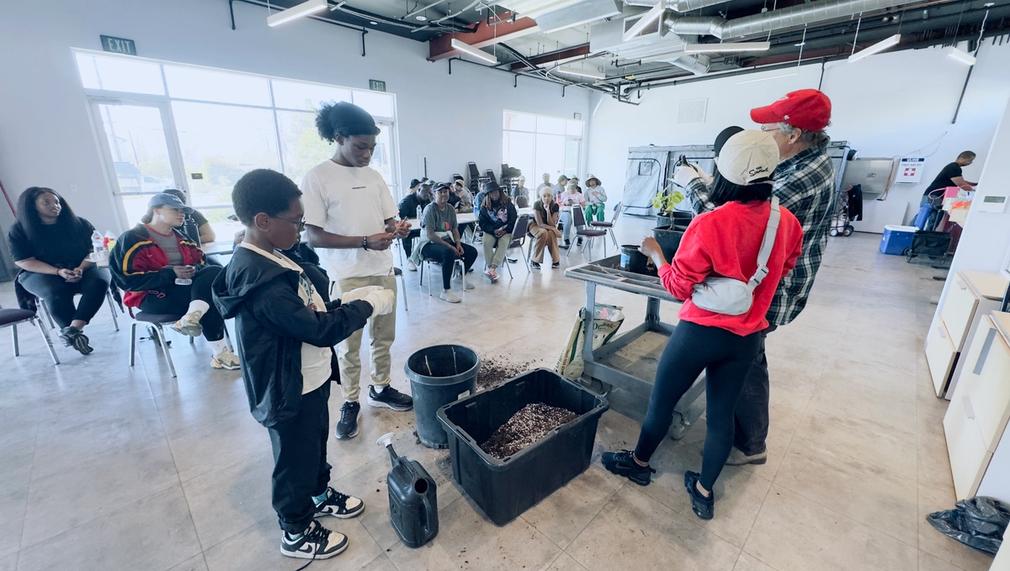Critical Grape Theory
This is an urban history initiative that builds social infrastructure by engaging young people in distressed neighborhoods of Los Angeles through planting interpretive vineyards, regenerative farming, the culinary arts, teaching life- and interpersonal skills, entrepreneurship and critical thinking. The program aims to help marginalized youth break the cycle of intergenerational poverty by teaching them about local history, healthy lifestyle choices, and business skills, thereby inspiring them to pursue better opportunities in life.

What is the primary issue area that your application will impact?
K-12 STEAM education
In which areas of Los Angeles will you be directly working?
South LA Central LA Gateway Cities City of Los Angeles (select only if your project has a citywide benefit)
In what stage of innovation is this project, program, or initiative?
Expand existing project, program, or initiative (expanding and continuing ongoing, successful work)
What is your understanding of the issue that you are seeking to address?
The issue we are addressing is a psychological barrier to possibility and growth. This barrier is based in intergenerational trauma and struggle for at -risk youth. The barrier affects how young people feel about the city they live in and, by extension, how they feel about themselves. Growing up marginalized, poor and underserved by the city (society), where their opportunities are limited, these young people fall into the patterns of being victimized by systemic discrimination resulting in poor educational, employment and life opportunities and the so-called school-to-prison pipeline. Knowledge of local history and systems that created the environment in which one lives is the first step toward learning from past wrongs and planning for a better future.
Describe the project, program, or initiative this grant will support to address the issue.
This initiative addresses the issue that at-risk young people have of not being able to envision a healthier and more fulfilling life for themselves, for their families and for their communities because they are too engaged in strategies of survival, of having a roof over their heads, food to eat, and neighborhoods that are safe from gang and other violence. By considering the sweep of history, they are able to see the big picture, to learn about systems of injustice and their own potential as they learn more about the history of the place they live.
In addition, by learning useful skills in the culinary and viticultural world, they prepare themselves to enact their visions of a productive life, one that will be fulfilling for them, in terms both spiritual and physical, with a larger purpose that helps not just them but their communities.
Also, by learning about plant genetics, they open up a world for themselves that can lead to higher education in STEM and STEAM careers in science, the arts and medicine.
With vineyards already planted in Watts, Willowbrook, MudTown and the LA State Historic Park, and another going into the ground shortly at the Hathaway Ranch and Oil Museum in Santa Fe Springs, we anticipate more opportunities to work with under-served youth. We are also scheduled to conduct classes with our partnering organization, CAKE, at the Theodore Payne Foundation, Alma Backyard Farms in Compton, Edible Schoolyard and the LASHP.
Describe how Los Angeles County will be different if your work is successful.
L.A. County will be greener. Communities will engage. And as vineyards multiply, as they already are, communities will be connected to each other through the common practice of planting historic vines. By becoming aware of the history of human habitation in the era, and the relationship those humans had and still have to the land, we are able to create a picture of L.A. and the land it is built on, that includes the Indigenous peoples and their ways of thinking.
It's important to note that each vineyard functions as an outdoor classroom as well as a site of conscience, or memory, so that in addition to learning the basics of historic viticulture, students are learning about the history of where they live.
We feel this can inform the education system for young people in the city and throughout L.A. county, while also providing extracurricular activities that will shape the way young people see the city, and see that they have a seat at the table in shaping its future -- and their own.
Approximately how many people will be impacted by this project, program, or initiative?
Direct Impact: 100
Indirect Impact: 1,000